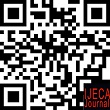Optimizing the Use of Matlab GUI Attributes in the Creation of Calculus Learning Media: An Effort to Measure Students' Innovative Attitudes
Abstract
Calculus learning requires a high level of visualization in instilling concepts optimally to students. Therefore, the purpose of this study is to look at students' innovative attitudes in developing matlab GUI-based learning media in solving calculus problems and see the influence of the ability to use matlab GUI attributes on the level of innovation of the students in developing learning media. In the early stages, the students developed media according to the given topic. In the second stage, the product was assessed in terms of its validity. The students' innovative attitudes were assessed by a team of experts using questionnaires with 5-point Likert scale. From the 16 media successfully developed, validation results were obtained with an average score of 3.83 which means "valid". Meanwhile, from the assessment of innovative attitudes, the students’ attitudes are in the category of "innovative" with an average score of 3.61. In addition, the results of the regression tests revealed that the innovative attitudes are influenced by the ability to use the matlab GUI attributes by 84.2%. The rest is influenced by other factors with similarities: . Lastly, the results of the assessment showed that the media belonged to the category of "very effective" (score 81.2%).
Keywords
Full Text:
DOWNLOAD [PDF]References
Abdul Majid, M., Huneiti, Z. A., Al-Naafa, M. A., & Balachandran, W. (2013). A study of the effects of using MATLAB as a pedagogical tool for engineering mathematics. International Journal of Online Engineering, 9(2), 27–35. https://doi.org/10.3991/ijoe.v9i2.2511
Afgani, M. W. (2016). Pemecahan Masalah Dan Menanam Pemahaman Konsep Matematika Melalui Software Maple. Jurnal Pendidikan Matematika Rafa, 2(1), 83–105.
Andriani, S. (2012). Pengembangan bahan ajar praktikum kalkulus melalui program maple untuk meningkatkan penalaran dan representasi mahasiswa. Atikan Journal, 2(2), 295–311.
Ario, M., Annajmi, A., & Isharyadi, R. (2020). Pengembangan Video Pembelajaran Kalkulus Diferensial Berbasis Pen Tablet. Jurnal Cendekia : Jurnal Pendidikan Matematika, 4(2), 1129–1142. https://doi.org/10.31004/cendekia.v4i2.363
Ario, M., & Asra, A. (2018). Pengaruh Pembelajaran Flipped Classroom terhadap Hasil Belajar Kalkulus Integral Mahasiswa Pendidikan Matematika. ANARGYA: Jurnal Ilmiah Pendidikan Matematika, 1(2), 82–88. https://doi.org/10.24176/anargya.v1i2.2477
Bhatti, A. H., Laigo, G. R., GebreYohannes, H. M., & Pulipaka, L. K. (2016). Using A Blended Learning Approach In Teaching Mathematics. Edulearn16 Proceedings, 1, 1366–1373. https://doi.org/10.21125/edulearn.2016.1273
Eyasu, G., Kassa, M., & Atnafu, M. (2018). MATLAB Supported Learning and Students’ Conceptual Understanding of Functions of Two Variables: Experiences from Wolkite University. Bulgarian Journal of Science and Education Policy, 12(2), 314–344.
Godfred, A., Bayaga, A., & Bosse, M. J. (2021). Analysis of Rural-Based Pre-Service Teachers Spatial-Visualisation Skills in Problem Solving in Vector Calculus Using MATLAB. International Journal of Emerging Technologies in Learning, 16(10), 149–150. https://doi.org/10.3991/ijet.v16i10.19269
Hidayati, T., & Ikasari, I. H. (2020). Developing Ict-Based Calculus Learning Media. JPMI (Jurnal Pendidikan Matematika Indonesia), 5(1), 10. https://doi.org/10.26737/jpmi.v5i1.1463
Indrajaya, U. (2014). Upaya meningkatkan pemahaman kalkulus melalui pembelajaran berbantuan maple pada mahasiswa teknik informatika AMIK Garut. Jurnal Wawasan Ilmiah, 5(10), 38–52.
Kumalasari, E., & Erika, E. (2018). Perancangan Media Pembelajaran Kalkulus Berbasis Multimedia Menggunakan Macromedia FLASH. Jurnal Edukasi, 5(1), 1. https://doi.org/10.19184/jukasi.v5i1.7580
Lestari, S. (2014). Penerapan Model Pembelajaran M-APOS dalam Meningkatkan Pemahaman Konsep dan Motivasi Belajar Kalkulus II. Jurnal Pendidikan Dan Keguruan, 1(1), 209688.
Liron, C., & Steinhauer, H. M. (2015). Analyzing longitudinal performance from multi-course alignment for 1st year engineering students: Calculus, physics, and programming in MATLAB. ASEE Annual Conference and Exposition, Conference Proceedings, 122nd ASEE(122nd ASEE Annual Conference and Exposition: Making Value for Society). https://doi.org/10.18260/p.23555
Lohgheswary, N., Nopiah, Z. M., Aziz, A. A., & Zakaria, E. (2018). Identifying Vector Calculus Topics For Innovative Teaching Via Computational Tools. Turkish Online Journal Of Design Art And Communication, 8(SEPT), 1121–1129. https://doi.org/10.7456/1080sse/153
Maskar, S., & Dewi, P. S. (2020). Praktikalitas dan Efektifitas Bahan Ajar Kalkulus Berbasis Daring Berbantuan Geogebra. Jurnal Cendekia : Jurnal Pendidikan Matematika, 4(2), 888–899. https://doi.org/10.31004/cendekia.v4i2.326
Paradesa, R., & Ningsih, Y. L. (2017). Pembelajaran Matematika Berbantuan Maple Pada Mata Kuliah Kalkulus Integral Terhadap Kemampuan Komunikasi Matematis Mahasiswa. Jurnal Pendidikan Matematika RAFA, 3(1), 70–81. https://doi.org/10.19109/jpmrafa.v3i1.1442
Ramdani, Y., Mohamed, W. H. S. W., & Syam, N. K. (2021). E-learning and academic performance during covid-19: The case of teaching integral calculus. International Journal of Education and Practice, 9(2), 424–439. https://doi.org/10.18488/journal.61.2021.92.424.439
Rifa’i, M. (2019). Penerapan Media Pembelajaran Kalkulus Berbasis Website Moodle untuk Menilai Aktivitas dan Hasil Belajar Mahasiswa STKIP Qomaruddin Gresik. Zeta - Math Journal, 4(2), 50–54. https://doi.org/10.31102/zeta.2019.4.2.50-54
Santosa, F. H., Bahri, S., & Ibrahim, M. (2018). Pengembangan aplikasi project simulasi Limit fungsi mengunakan matlab. Jurnal Riset Teknologi Dan Inovasi Pendidikan, 1(2), 80–89.
Sugiharni, G. A. D. (2019). Perancangan Kuesioner Agresivitas Mahasiswa Berbasis Aplikasi Wondershare Quizcreator Dalam Pembelajaran Kalkulus Di Institut Teknologi Dan Bisnis Stikom Bali. Jurnal Pendidikan Teknologi Dan Kejuruan, 16(2), 298. https://doi.org/10.23887/jptk-undiksha.v16i2.18966
Suhandri, S. (2016). Implementasi Program Aplikasi Maple Untuk Meningkatkan Prestasi Dan Motivasi Belajar Mahasiswa Pada Perkuliahan Kalkulus Integral. Suska Journal of Mathematics Education, 2(1), 57. https://doi.org/10.24014/sjme.v2i1.1440
Sullivan, E., & Melvin, T. (2016). Enhancing Student Writing and Computer Programming with LATEX and MATLAB in Multivariable Calculus. PRIMUS, 26(6), 509–530. https://doi.org/10.1080/10511970.2015.1122688
Syaharuddin, Negara, H. R. P., Mandailina, V., & Sucipto, L. (2017). Calculus Problem Solution And Simulation Using GUI Of Matlab. International Journal of Scientific and Technology Research, 6(9), 275–279.
Tepljakov, A., Petlenkov, E., Gonzalez, E. A., & Petras, I. (2017). Design of a MATLAB-based teaching tool in introductory fractional-order systems and controls. Proceedings - Frontiers in Education Conference, FIE, 2017-Octob, 1–5. https://doi.org/10.1109/FIE.2017.8190681
DOI: https://doi.org/10.31764/ijeca.v5i1.7981
Refbacks
- There are currently no refbacks.
Copyright (c) 2022 Lalu Sucipto, Samsul Irpan

This work is licensed under a Creative Commons Attribution-ShareAlike 4.0 International License.
IJECA (International Journal of Education and Curriculum Application) already indexed:










___________________________________________________________________
| |
____________________________________________________________________
IJECA Publisher Office:







.jpg)




